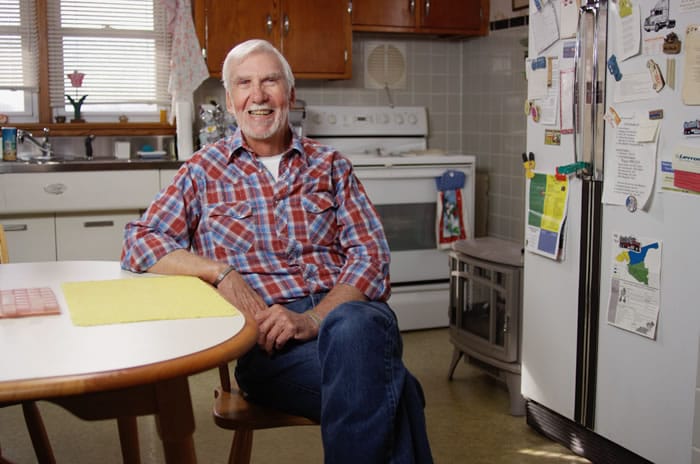A Community With Heart
Nearly seven years ago, George Maxwell was the first patient at Lancaster General Hospital to receive a Left Ventricular Assist Device (LVAD) as a permanent solution for heart failure.
Now 75, the Mount Joy resident leads an active life, working part-time and volunteering to share his story with other patients facing a frightening future.
Bob Haas, 52, met Maxwell as he was about to have his own LVAD surgery two years ago.
The former delivery man and one-time EMT was worried that carrying the device would strip him of his dignity, despite having two previous heart attacks, spending nearly a month in a medically induced coma and being told he might have just weeks to live.
 “I didn’t know what an LVAD was. I just knew it had these big, bulky batteries,” Haas recalls. “Once I met George, it was so positive.”
“I didn’t know what an LVAD was. I just knew it had these big, bulky batteries,” Haas recalls. “Once I met George, it was so positive.”
Maxwell got his LVAD in late 2010 after being diagnosed with congestive heart failure. He couldn’t walk from his bedroom to his bathroom without stopping to let his racing heart rest.
Like Haas, he had seen videos of older, larger assist devices.
“But I didn’t really have a lot of time to think about it,” he says “It was a question of, how long do I wait? Do I want to take a chance that something else will go wrong?”
He has no regrets about moving forward quickly at the recommendation of his trusted LGH physicians. But back then, Maxwell had no fellow LVAD recipients to talk to about his concerns.
That’s one reason he speaks to others who are eligible to receive the device—even if they only need it for temporary support or until they can find a donor heart for a transplant. He’s traveled to hospitals throughout Pennsylvania and spoken at heart and lung conferences.
“This is an alternative that can work,” Maxwell says. “I’m doing pretty much everything now.”
Though he has to protect the controller from water and avoids strenuous exercise, Maxwell lives on his own, still mows his own grass and works three days at an auction house.
Haas faced challenges after his surgery. While doctors experimented with finding the right rhythm for his pump, he battled consistent nausea. He’ll take medication for life.
And at just 52, he will likely still need a transplant.
For now, he’s grateful to be breathing normally and for the chance to spend more time with his wife, Bj Laird.
When they go out, Haas dons a compression shirt favored by law enforcement. He places his 14-hour battery pack and a controller in pockets meant for a weapon and ammo.
No one can tell a pump is keeping him going. For that, he thanks Maxwell, who passed along the tip about attire during one of their many meetings at LG Health.
